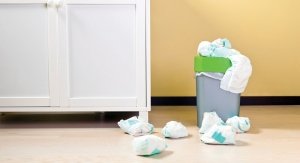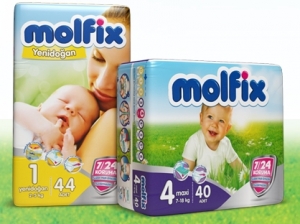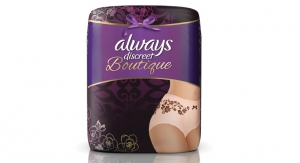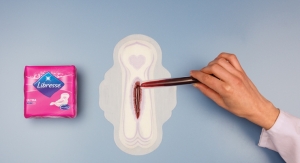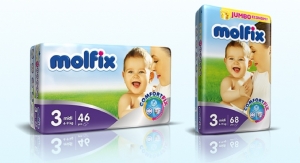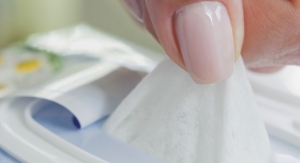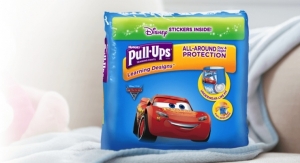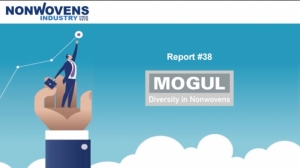Danielle le Clus-Rossouw, Senior Analyst, Euromonitor Cape Town, South Africa01.05.18
Companies are increasingly realizing the high growth and gap in the Nigerian market due to the significant percentage of the population that does not use diapers in developing nations, as developed nations are experiencing a slowdown in size and the aging of their populations. Developing nations such as Nigeria are seeing a rise in their population aged zero to three years old, reaching 14% of the total population in 2017 at 26 million potential baby consumers.
In 2017 diaper growth is however hampered from the supply side, with stock shortages of quality brands due to the challenge of raising capital, and a shortage of foreign exchange as well as lack of local manufacturing due to electricity constrains still being significant issues. This is especially a problem for smaller brands that wish to play a role in the formal market. For example, brands like Dr. Brown, Baby Hugg, Sunfree, Cuddles, Rose Tenders and Mary Diamond, are all importing diapers while leading brands such as Molfix, Pampers and Huggies are protected against this by their companies’ strong international financial backing.
Hayat Kimya Nigeria Ltd., meanwhile, has benefitted from putting up a manufacturing plant with its own electricity generating facilities.
Molfix Takes the Leading Position in Diaper Volume Sales
The storm of Molfix diapers by Hayat in the Nigerian market in 2015 has led to stronger competition between brands. The company has positioned the brand at an affordable level for the ‘struggling’ middle class with distribution throughout all retail channels in both rural and urban areas and it has various distribution warehouses, run by companies and individuals who have warehouse capabilities and the necessary capital to secure their spots. Hayat also opened a local manufacturing plant in mid-2017, and can thus ensure higher availability of stock. This has led to significant volume growth of 844% since entering the market, placing it in the leading volume position. However, due to its lower price positioning, it ranks second in value terms in 2017. With its growing market penetration and availability of stock, Molfix is expected to reach brand dominance in both volume and value by 2019.
Leading Competitors Engage in an Aggressive Price War to Gain Market Share
Competitors have taken robust approaches in attempting to maintain marketshare and boost sales in a harsher economic climate. Hayat, Procter & Gamble (P&G) and Kimberly-Clark all carried out industry surveys with both consumers and retailers to are assessing the market to ensure optimal proficiency in 2017. Further efforts to secure higher market sales included offering distributors promotional discounts in the first half of the year to help boost sales. Hayat has offered distributors a 10% discount across all products and an extra 3% when they exceeded a certain sales level. P&G initially ran a buy-15-get-two-free promotion, which was later lowered to buy 20 bundles get one free. This resulted in further brand discounts offered mid-year: 4.5% discount by P&G and 9% by Hayat. Retailers and distributors complained bitterly about these price wars, as they would buy bulk for discount purposes one day, only to see a further price reduction the next.
Smaller Competitors Under Significant Pressure to Perform
Smaller brands’ performances are not only hampered by the intense competition from quality low-cost brands from the leading players Hayat and P&G, but also by a weak performance from their own end. Kimberly-Clark, for example, is under pressure from consumers who are complaining that its Huggies size three is too small compared to typical size 3 diapers, while brands such as Dr. Brown, Sunfree and Baby Huggs are experiencing frequent stock-outs, mainly due to these companies importing their products. Sunfree diapers were noticeably short in Ketu, Agege and Oshodi, while Baby Huggs re-entered the market in February after an absence in January. The Pampers brand also came under fire from consumer complaints of leakages, which led to a volume sales drop for the brand.
Formal Retail as Distribution Partners Appealing for Growth
The informal market is flooded with over 50 brands of cheap Chinese imports, but these are considered unreliable. Parents take pride in their children and aim to give them the best that they can afford, and those in the low-income group would rather use the cloth alternative than cheaper imports.
Brands placed in formal retail stores, primarily in hypermarket Shoprite, have reportedly been selling well, as Shoprite is reportedly boosting all competitor sales when sold through its outlets. Shoprite is considered to deliver quality products and has high stock availability, thus is a trusted store to get the brand that the consumer is looking for. In 2017, the Dr. Brown’s brand of nappies was threatened to be taken off the shelf due to stock-outs, which damaged the Shoprite brand. This is, however, the channel in which Wemy International sees its highest sales. Thus stock availability is essential to keep boosting sales.
Brand Owners Looking at Smart Initiatives to Boost Company Growth
To expand company sales, all brands are intensifying their sales into the business environment, especially hospitals, which currently generate approximately 20% of total market volume sales. Hospitals as a channel is growing significantly. Brand owners are reaching partnership agreements with hospitals, selling diapers to them at lower prices. Brands are eager to make their sales via this channel, as this gives parents the opportunity to try a brand, and if happy in using it, they will continue purchasing the brand once they leave the hospital. Hayat currently leads hospital baby nappy sales, while Pampers is pushing below-the-line promotion and engaging with parents to boost sales.
More players will also be implementing strategies to deliver more efficient product lines, cut back on company costs and seek investments. For example, a major Japanese brand owner is researching opportunities to partner with small local manufacturers to tap into the market and motivate company growth. Meanwhile, local player Wemy Industries is approaching international investors to help establish a local manufacturing plant to help lower product costs and assist with ensuring continuous product supply. It stopped local production in 2008 and started importing in 2009 due to electricity supply issues, but hopes to have success this time around, especially with the local manufacturing success of competitor Hayat.
Thus, despite the economic recession in Nigeria in 2016 and slow economic growth in 2017, diapers saw 6% volume growth in 2017. The growth will continue over the forecast period with a 9% CAGR to reach 3.6 billion units sold in retail in 2022. Baby diapers is still far from mature with most of the population not making use of these products, while the improving status of women, rise in the baby population, urbanization growth, price affordability and increasing efforts from competitors to have available stock, is creating an excellent platform for future growth.
In 2017 diaper growth is however hampered from the supply side, with stock shortages of quality brands due to the challenge of raising capital, and a shortage of foreign exchange as well as lack of local manufacturing due to electricity constrains still being significant issues. This is especially a problem for smaller brands that wish to play a role in the formal market. For example, brands like Dr. Brown, Baby Hugg, Sunfree, Cuddles, Rose Tenders and Mary Diamond, are all importing diapers while leading brands such as Molfix, Pampers and Huggies are protected against this by their companies’ strong international financial backing.
Hayat Kimya Nigeria Ltd., meanwhile, has benefitted from putting up a manufacturing plant with its own electricity generating facilities.
Molfix Takes the Leading Position in Diaper Volume Sales
The storm of Molfix diapers by Hayat in the Nigerian market in 2015 has led to stronger competition between brands. The company has positioned the brand at an affordable level for the ‘struggling’ middle class with distribution throughout all retail channels in both rural and urban areas and it has various distribution warehouses, run by companies and individuals who have warehouse capabilities and the necessary capital to secure their spots. Hayat also opened a local manufacturing plant in mid-2017, and can thus ensure higher availability of stock. This has led to significant volume growth of 844% since entering the market, placing it in the leading volume position. However, due to its lower price positioning, it ranks second in value terms in 2017. With its growing market penetration and availability of stock, Molfix is expected to reach brand dominance in both volume and value by 2019.
Leading Competitors Engage in an Aggressive Price War to Gain Market Share
Competitors have taken robust approaches in attempting to maintain marketshare and boost sales in a harsher economic climate. Hayat, Procter & Gamble (P&G) and Kimberly-Clark all carried out industry surveys with both consumers and retailers to are assessing the market to ensure optimal proficiency in 2017. Further efforts to secure higher market sales included offering distributors promotional discounts in the first half of the year to help boost sales. Hayat has offered distributors a 10% discount across all products and an extra 3% when they exceeded a certain sales level. P&G initially ran a buy-15-get-two-free promotion, which was later lowered to buy 20 bundles get one free. This resulted in further brand discounts offered mid-year: 4.5% discount by P&G and 9% by Hayat. Retailers and distributors complained bitterly about these price wars, as they would buy bulk for discount purposes one day, only to see a further price reduction the next.
Smaller Competitors Under Significant Pressure to Perform
Smaller brands’ performances are not only hampered by the intense competition from quality low-cost brands from the leading players Hayat and P&G, but also by a weak performance from their own end. Kimberly-Clark, for example, is under pressure from consumers who are complaining that its Huggies size three is too small compared to typical size 3 diapers, while brands such as Dr. Brown, Sunfree and Baby Huggs are experiencing frequent stock-outs, mainly due to these companies importing their products. Sunfree diapers were noticeably short in Ketu, Agege and Oshodi, while Baby Huggs re-entered the market in February after an absence in January. The Pampers brand also came under fire from consumer complaints of leakages, which led to a volume sales drop for the brand.
Formal Retail as Distribution Partners Appealing for Growth
The informal market is flooded with over 50 brands of cheap Chinese imports, but these are considered unreliable. Parents take pride in their children and aim to give them the best that they can afford, and those in the low-income group would rather use the cloth alternative than cheaper imports.
Brands placed in formal retail stores, primarily in hypermarket Shoprite, have reportedly been selling well, as Shoprite is reportedly boosting all competitor sales when sold through its outlets. Shoprite is considered to deliver quality products and has high stock availability, thus is a trusted store to get the brand that the consumer is looking for. In 2017, the Dr. Brown’s brand of nappies was threatened to be taken off the shelf due to stock-outs, which damaged the Shoprite brand. This is, however, the channel in which Wemy International sees its highest sales. Thus stock availability is essential to keep boosting sales.
Brand Owners Looking at Smart Initiatives to Boost Company Growth
To expand company sales, all brands are intensifying their sales into the business environment, especially hospitals, which currently generate approximately 20% of total market volume sales. Hospitals as a channel is growing significantly. Brand owners are reaching partnership agreements with hospitals, selling diapers to them at lower prices. Brands are eager to make their sales via this channel, as this gives parents the opportunity to try a brand, and if happy in using it, they will continue purchasing the brand once they leave the hospital. Hayat currently leads hospital baby nappy sales, while Pampers is pushing below-the-line promotion and engaging with parents to boost sales.
More players will also be implementing strategies to deliver more efficient product lines, cut back on company costs and seek investments. For example, a major Japanese brand owner is researching opportunities to partner with small local manufacturers to tap into the market and motivate company growth. Meanwhile, local player Wemy Industries is approaching international investors to help establish a local manufacturing plant to help lower product costs and assist with ensuring continuous product supply. It stopped local production in 2008 and started importing in 2009 due to electricity supply issues, but hopes to have success this time around, especially with the local manufacturing success of competitor Hayat.
Thus, despite the economic recession in Nigeria in 2016 and slow economic growth in 2017, diapers saw 6% volume growth in 2017. The growth will continue over the forecast period with a 9% CAGR to reach 3.6 billion units sold in retail in 2022. Baby diapers is still far from mature with most of the population not making use of these products, while the improving status of women, rise in the baby population, urbanization growth, price affordability and increasing efforts from competitors to have available stock, is creating an excellent platform for future growth.





